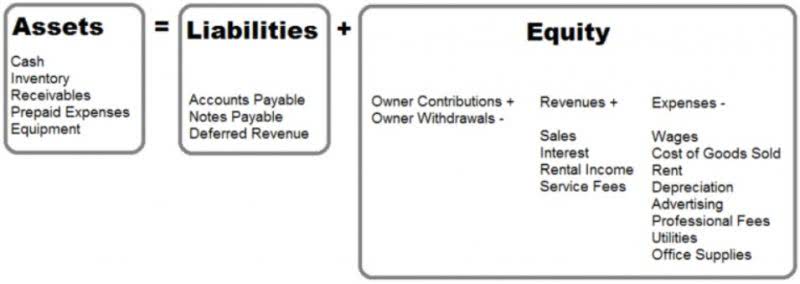
They can’t decide the shipping company, the route the company takes, or when and how the shipment is delivered. With FOB delivery, the buyer pays for unloading costs upon the arrival of the goods at the designated location. Similar to “Freight Prepaid and Allowed,” in this scenario, the seller covers the upfront freight costs and is liable for the items until they reach the buyer. While FOB Destination lays the groundwork for understanding responsibility transfer in shipping, it’s crucial to explore its variations.

FOB Shipping Point vs. FOB Destination: What’s the Difference?
They negotiate a purchase order for the sale of 2,000 tablets at a unit price of $100 USD. The invoice can be sent directly from the Skynova platform (notifying you when it’s opened by the buyer).
How to Handle Disputes in Transactions Involving Either Incoterm: FOB Destination or FOB Origin
- However, if the seller wants to minimize risk and offer a complete service (including delivery), FOB Destination would be a better option.
- Any concerns or questions about the condition of the items can be addressed with the seller before ownership officially changes hands.
- Incoterms define the international shipping rules that delegate the responsibility of buyers and sellers.
- Known as Incoterms, these terms are published by the International Chamber of Commerce (ICC) to help navigate the complexities of international trade and differing country laws.
- It’s important to understand all of these factors when comparing costs and making a decision.
- When the goods arrive in Hamburg, the German buyer accepts delivery, pays any import duties, and takes ownership.
- From that point, the buyer is responsible for making further transport arrangements.
FOB status signifies the point in international shipping where ownership and responsibility for goods transfer from the seller to the buyer. These terms, last updated by the International Chamber of Commerce (ICC) in 2020, encompass 11 internationally acknowledged Incoterms. These standards outline the respective responsibilities of buyers and sellers during export transactions. Beyond the fundamental concepts of FOB shipping point and FOB destination, there are several specific FOB terms that businesses may encounter in their shipping agreement.
Costs Associated with Freight on Board

It is important to understand the nature of the term accounting FOB, as it will affect how the freight charges are posted to the accounting records. Choosing between FOB Destination and FOB Origin fob shipping point is a critical decision that should not be taken lightly. Both options come with their advantages and disadvantages, and your choice ultimately depends on your business needs and preferences.
With an accrual accounting system, income and expenses are reported as soon as cash is earned or debt is incurred. So, an FOB transaction could muddy your financial picture as you make a quarterly financial statement. In the case of the FOB shipping point, the seller would record $50,000 as coming in, even though they haven’t been paid yet. So, there’s a disparity in the amount of money you’ve recorded as having and how much cash is actually there. The difference between the two designations can be a big deal for businesses because it indicates which party is responsible for the costs if a shipment is lost, stolen, or damaged.
He has been the CFO or controller of both small and medium sized companies and has run small businesses of his own. He has been a manager and an auditor with Deloitte, a big 4 accountancy firm, and holds a degree from Loughborough University. Once the goods are at the buyers destination, the ownership of the goods and the risk passes to the buyer. If you’re ordering many products from a single seller, you may have more leverage to negotiate FOB destination terms, as the cost of shipping per unit will likely be lower for the seller.

- As an example of FOB shipping point accounting, suppose the value of the goods is again 5,000 and the freight expense from the shipping point of 600 is paid in cash by the buyer.
- If the seller is responsible for arranging transportation, they may choose a cheaper or less reliable carrier, which could result in damage to the goods during transit.
- This can raise questions about their ability to meet delivery deadlines and is a significant risk for FOB Destination transactions.
- So, with an FOB shipping point agreement for $50,000 worth of goods, the seller would put $50,000 in their accounts receivable when the goods were shipped and deduct $50,000 from their inventory.
- FOB is important because it has shipping liability and accounting implications.
- FOB is part of the incoterms list published by the International Chamber of Commerce.
Clear Allocation of Responsibilities
- A free on board (FOB) designation specifies whether the buyer is responsible for freight charges.
- Although FOB shipping point and FOB destination are among the most common terms, other agreements vary from these two.
- Understanding the nuances of FOB is paramount for businesses engaged in international trade, as it directly influences pricing, risk management, and logistical strategies.
- “FOB” stands for “Free On Board,” and “destination” refers to the buyer’s location or destination.
- It indicates the point when the costs and risks of shipping shifts from the seller to the buyer.
- With an accrual accounting system, income and expenses are reported as soon as cash is earned or debt is incurred.
